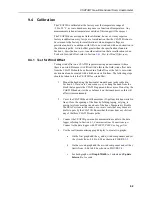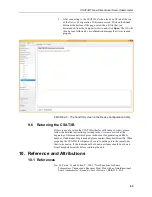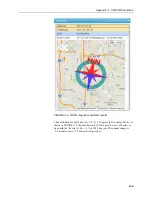
Appendix B. CSAT3B Measurement Theory
B-2
B.1.2 Temperature
The sonically determined speed of sound is given in Eq. (B-5) and was found
from the sum of the inverses of Eq. (B-1) and (B-2). The CSAT3B corrects
online for the effect of wind blowing perpendicular to the sonic path. No
additional off-line corrections are required as suggested by Liu et al., 2001.
c
d
t
t
o
b
=
+
2
1
1
(B-5)
The speed of sound in moist air is a function of temperature and humidity and
is given by:
(
)
q
T
R
T
R
P
c
d
v
d
61
.0
1
2
+
=
=
=
γ
γ
ρ
γ
(B-6)
where:
γ
= ratio of specific heat of moist air at constant pressure to
that at constant volume
P = pressure
ρ =
air density
R
d
= gas constant for dry air
T
v
= virtual temperature
T = air temperature
q = specific humidity defined as the ratio of the mass of
water vapor to the total mass of air (as in Kaimal and
Gaynor, 1991; and Wallace and Hobbs, 1977)
Note that
γ
is a function of specific humidity. It would be convenient if the
effects of humidity could be consolidated into one term.
The specific heats for moist air at constant pressure and volume are given by:
C
p
=
+ −
qC
q C
pw
pd
(
)
1
=
+
C
q
pd
(
.
)
1 0 84
(B-7a)
C
v
=
+ −
qC
q C
vw
vd
(
)
1
=
+
C
q
vd
(
.
)
1 0 93
(B-7b)
where:
C
p
and C
v
= specific heats of moist air at constant volume
and pressure
C
pw
and C
vw
= specific heat of water vapor























